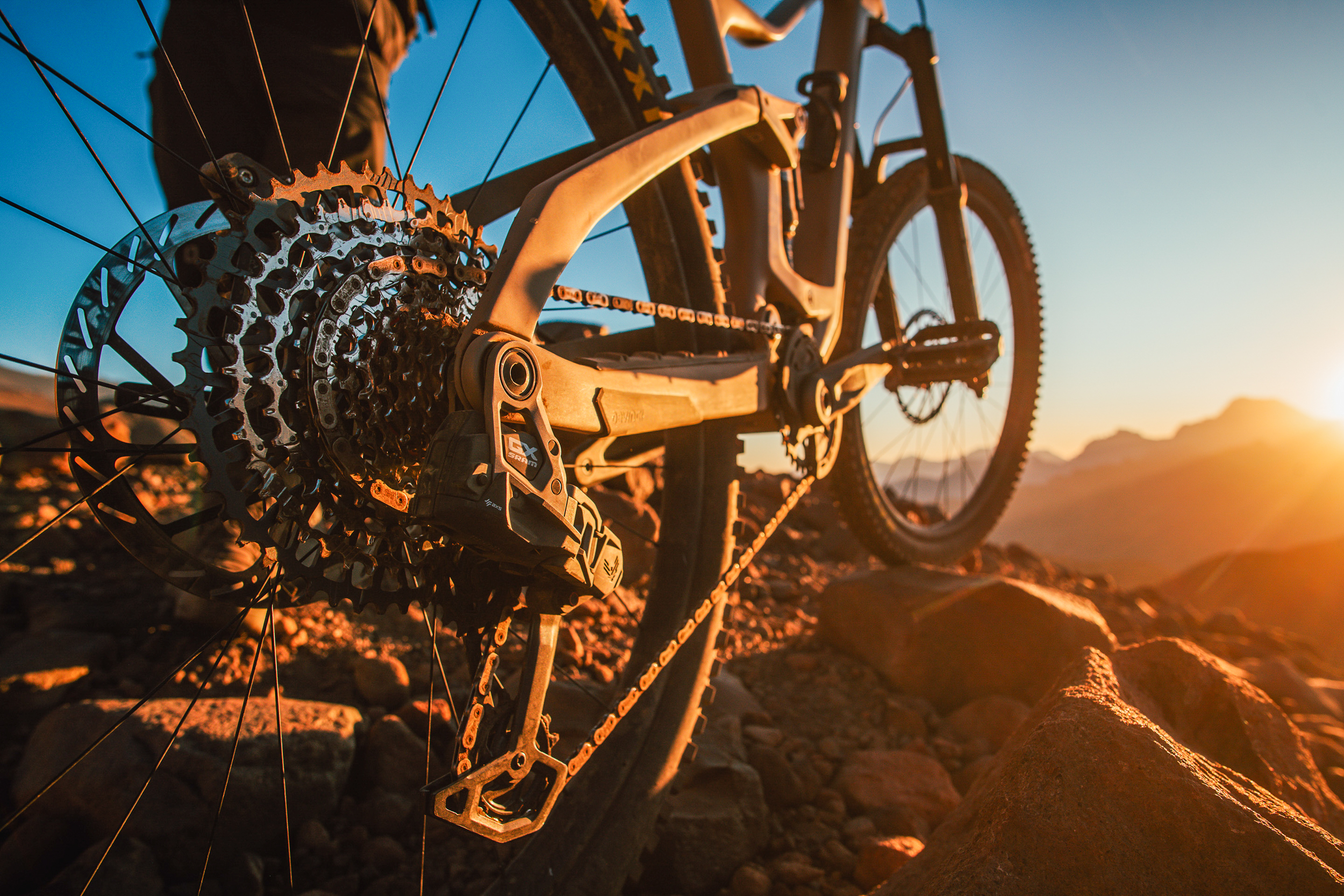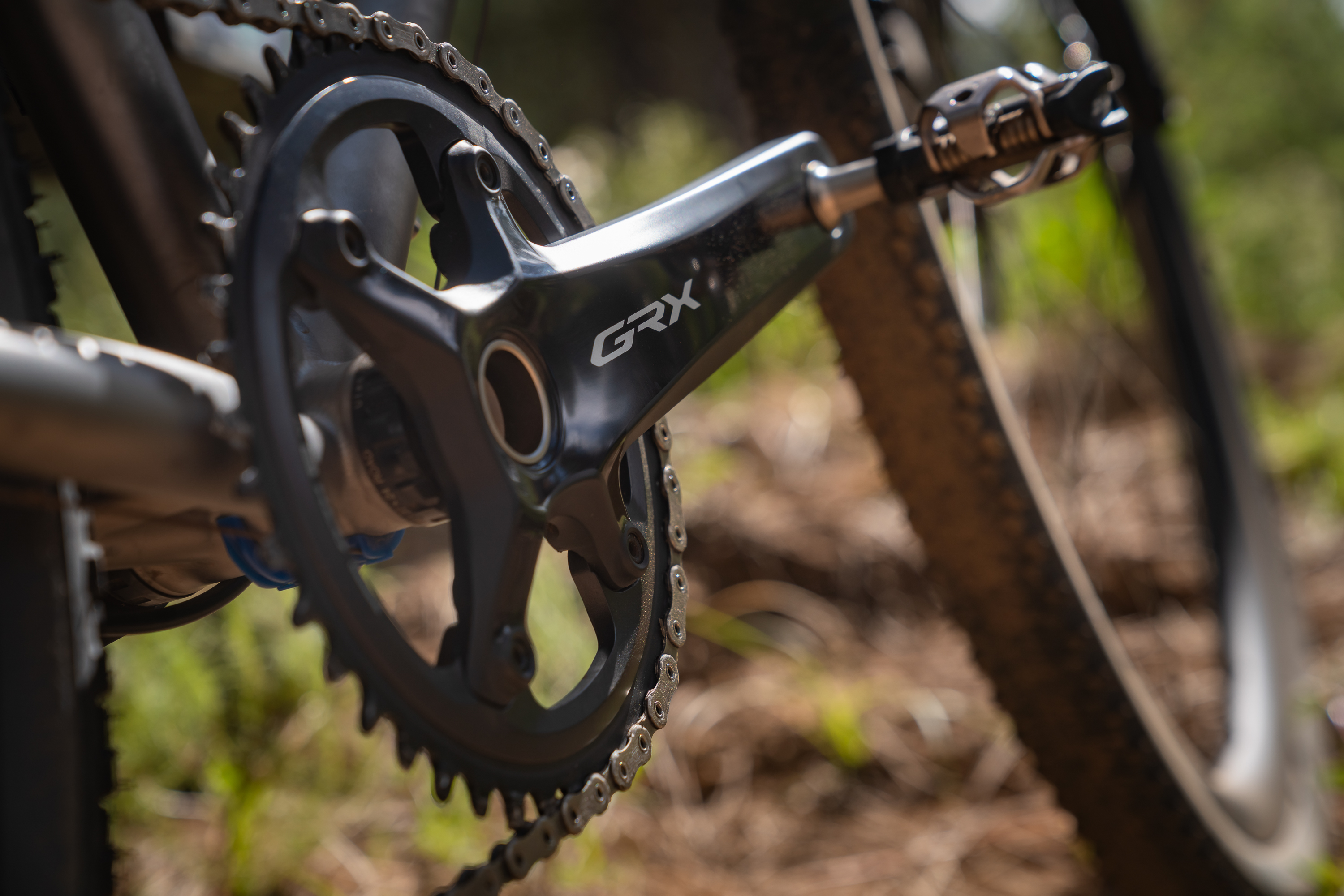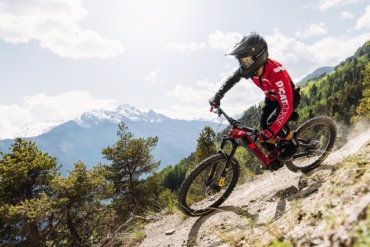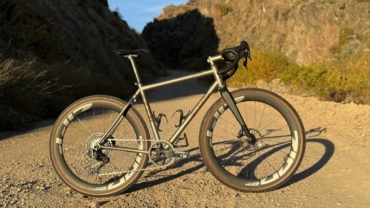It’s only been a year since SRAM broke the rear derailleur paradigm with its direct-mount Transmission. The evolutionary design caused commotion, speculation, and a flurry of both fanatics and naysayers. Mounted to the rear of some of the slickest bikes in the business, the Transmission ushered in a new standard for SRAM groupsets and the cycling industry.
The Chicago-based brand takes considerable risks and isn’t afraid to rock the boat. Not too long ago, SRAM broke another rear-shifting paradigm by introducing the Universal Derailleur Hanger (UDH), which 210 bike models have adopted as of this writing.
Notably, it made the Transmission possible by eliminating the now seemingly unfashionable rear derailleur hanger. And, lest we forget, SRAM introduced the single front chainring 1x system and wireless shifting.
The other component brands have been steaming ahead in developing drivetrains, but SRAM has dominated the new-release game for quite a while. All bicycle component brands are pushing the envelope, adding range, increasing compatibility, developing ever-quicker shifting, and innovating wireless innovations that seemed a novelty rather than the norm not long ago. However, SRAM has been the leader in many ways.
This rundown will focus on SRAM’s off- and on-pavement performance groupsets lineup.
SRAM Groupsets: Mountain Bike

SRAM mountain bike groupsets are everywhere, and the latest SRAM Transmission direct-mount technology is visibly different from any other mountain bike drivetrain.
Steadily progressing for decades, SRAM groupsets shrugged off convention to reimagine drivetrains to make them easier to use, less cumbersome, and more durable than earlier technology would allow.
The latest iteration of SRAM MTB tech, the SRAM Eagle Transmission ecosystem, is no exception. With a range of interchangeable components spanning from complete groupsets from $1,099 to $2,699, SRAM offers a path to mix and match elements that can help dial in cost and performance needs for every rider.
All Eagle Transmission groupsets are 12-speed and feature the now seemingly standard AXS wireless shifting platform.
SRAM says its Eagle Transmission technology is lighter, simpler, and more robust. There are no rear derailleur adjustment screws or hangers, and the drivetrain offers a 520% gear ratio range that aligns with the range of 2x setups.
Here is a rundown of the hierarchy of the SRAM Eagle Transmission mountain bike ecosystem, from bottom to top.
Note: SRAM Eagle Transmission groupsets do not come with a braking system. SRAM offers several hydraulic disc brake systems separately.
GX Eagle Transmission
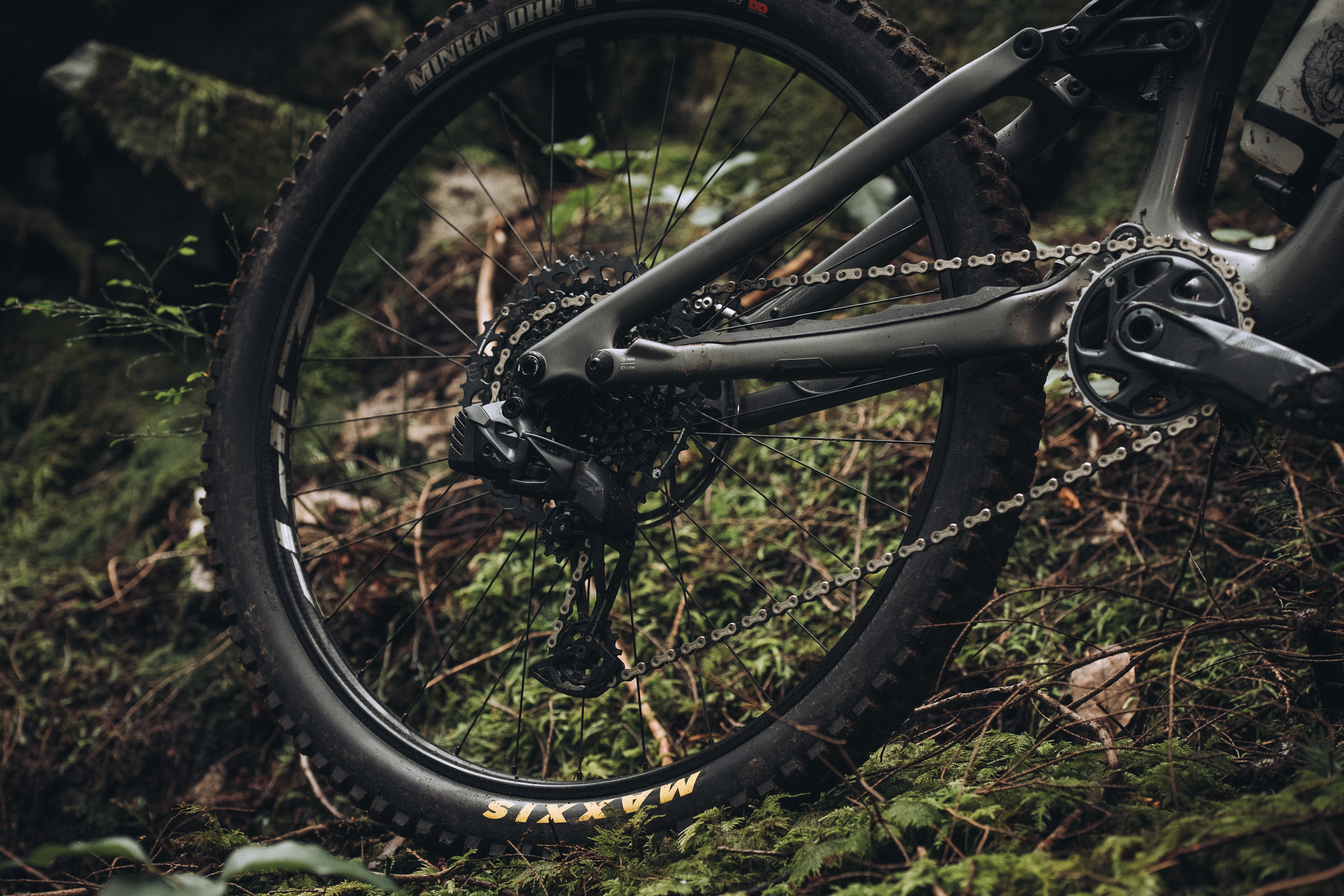
SRAM GX Eagle is the entry-level, budget-conscious contestant in the Eagle Transmission lineup, but it is by no means short on features. SRAM claims that it is the brand’s most dependable and longest-lasting drivetrain.
GX Eagle saves a lot of money compared to upper-tier Transmission groupsets by eliminating the carbon crankset. SRAM forges it out of aluminum with visible 3D shaping to shave weight and bulk. It is available in 165mm, 170mm, and 175mm lengths and uses a DUB bottom bracket. Finally, SRAM offers removable composite bash guards to protect the finish.
The 32-tooth chairing and 10-52-tooth cassette still feature the X-SYNC technology and mapping of pricier versions to ease shifts under high load. The matching T-Type chain is the most robust SRAM has ever made, making it appropriate for the most potent e-bikes. And, notably, the rear derailleur is fully rebuildable.
X01 Eagle Transmission
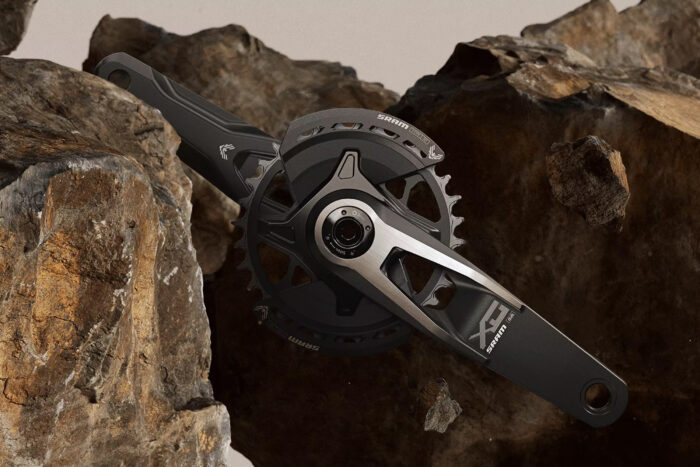
The X01 Eagle Transmission groupset checks all the same boxes as the GX Eagle Transmission but in a lighter yet durable package. SRAM claims that X01 is its enduro-specific Eagle Transmission entry, and a few features certainly fit the bill.
Like its less-expensive counterpart, the X01 Eagle crankset is forged aluminum with more complex shaping and weighs less. SRAM claims it’s the most advanced aluminum crankset it has ever produced. Moreover, it also claims the X01 is the lightest aluminum crankset on the market. It comes in 165mm, 170mm, and 175mm lengths with a 32-tooth X-SYNC chainring. SRAM offers a removable bash guard for the chainring; the derailleur also comes with replaceable skid plates.
The chain and Eagle cassette are both upgrades from the GX Eagle Transmission units. They are both plated with electroless nickel. The chain has solid pins and sports a PVD coating to enhance corrosion and wear resistance.
Finally, the right-side AXS wireless shifter pod (AXS Pod Ultimate) is SRAM’s most premium version. It’s lighter, has more advanced ergonomics, and offers a more comprehensive range of adjustability.
XX Eagle Transmission
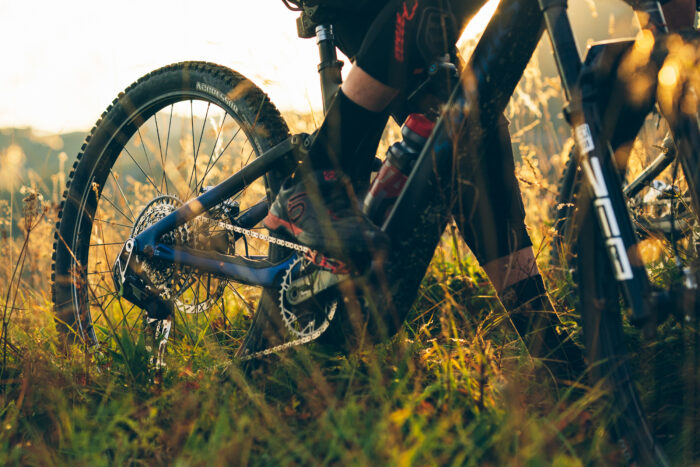
SRAM XX is the groupset level in the Eagle Transmission range when you officially enter the “racing” arena. Per SRAM: “The drivetrain of dreams, XX Eagle Transmission has been designed and engineered into tangible technology for the world’s most demanding on the widest range of builds.”
And if I got by the word on the streets, having XX Eagle Transmission on your bike carries mighty high envy factor. But it comes with a hefty price tag.
The most significant difference between this groupset and the prior two is the inclusion of a carbon crankset. And like the aluminum versions, the XX Eagle Transmission cranks are available in 165mm, 170mm, and 175mm lengths. The carbon crankset alone removes a significant heft. And for the wattage hounds, SRAM offers a version with a Quarq power meter. A DUB bottom bracket keeps things spinning.
A 23-tooth X-SYNC chainring mates with the same Eagle Transmission 10-52-tooth cassette from the X01 groupset and SRAM offers removable bash guards. An upgraded XX Eagle Transmission Flattop Chain transfers power between the two.
The same AXS Pod Ultimate shifter as in the X01 Eagle Transmission group runs the direct-mount transmission through the 520% range Eagle cassette.
XX SL Eagle Transmission
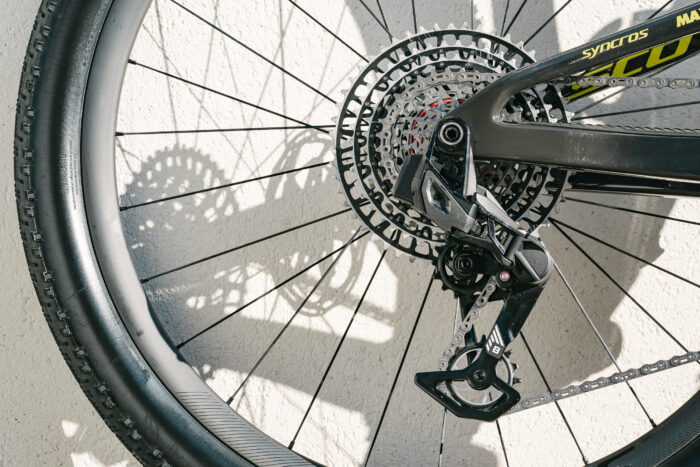
The SRAM XX Eagle SL Transmission drivetrain groupset is the pinnacle of the brand’s mountain bike componentry lineup. For this World Cup-winning groupset, dropping weight is the name of the game.
The carbon XX Eagle SL crankset is the lightest ISO-certified crankset on the planet. It is paired with an XX Eagle SL direct-mount 34-tooth chainring. SRAM offers a Quarq power-meter version for calculating your surely sky-high power-to-weight ratio.
Further significant weight reduction comes through advanced machining of the XX Eagle SL Transmission cassette. The 10-52 tooth unit is the lightest cassette SRAM has ever made. An XX Eagle SL Flattop chain ties the chainring and cassette together, and, of course, all of it has X-SYNC technology that shifts better under load than it does without.
A lighter XX Eagle SL T-Type (Transmission) derailleur moves the chain across the cassette.
Everything else in the XX Eagle SL groupset is borrowed from the XX Eagle drivetrain.
Pricing
- GX Eagle Transmission: MSRP $1,099
- X01 Eagle Transmission: MSRP $2,199-2,699
- XX Eagle Transmission: MSRP $2,049-2,299
- XX Eagle SL Transmission: MSRP $2,199-2,699
SRAM also offers non-Transmission groupsets, including mechanical shifting systems.
SRAM Road Groupsets

SRAM road groupsets evolve quickly, just like the brand’s mountain bike offerings. Force AXS was still fresh at the time of writing and ushered forward better ergonomics and a new aesthetic for the second-tier groupset.
Apex and Rival drastically reduced the financial barrier of entry into electronic groupsets, particularly as OEM parts on complete retail bicycles. Although Apex still offers a mechanical drivetrain option, it’s the only mechanical road group hanging on in the SRAM lineup.
Red e-Tap AXS may be getting long in the tooth, but that hasn’t kept it off the podium in the pro WorldTour. The groupset still makes plenty of appearances at the front of the world’s most challenging and prestigious races. If it’s good enough for the pros, well, it’s certainly good enough for us!
Apex
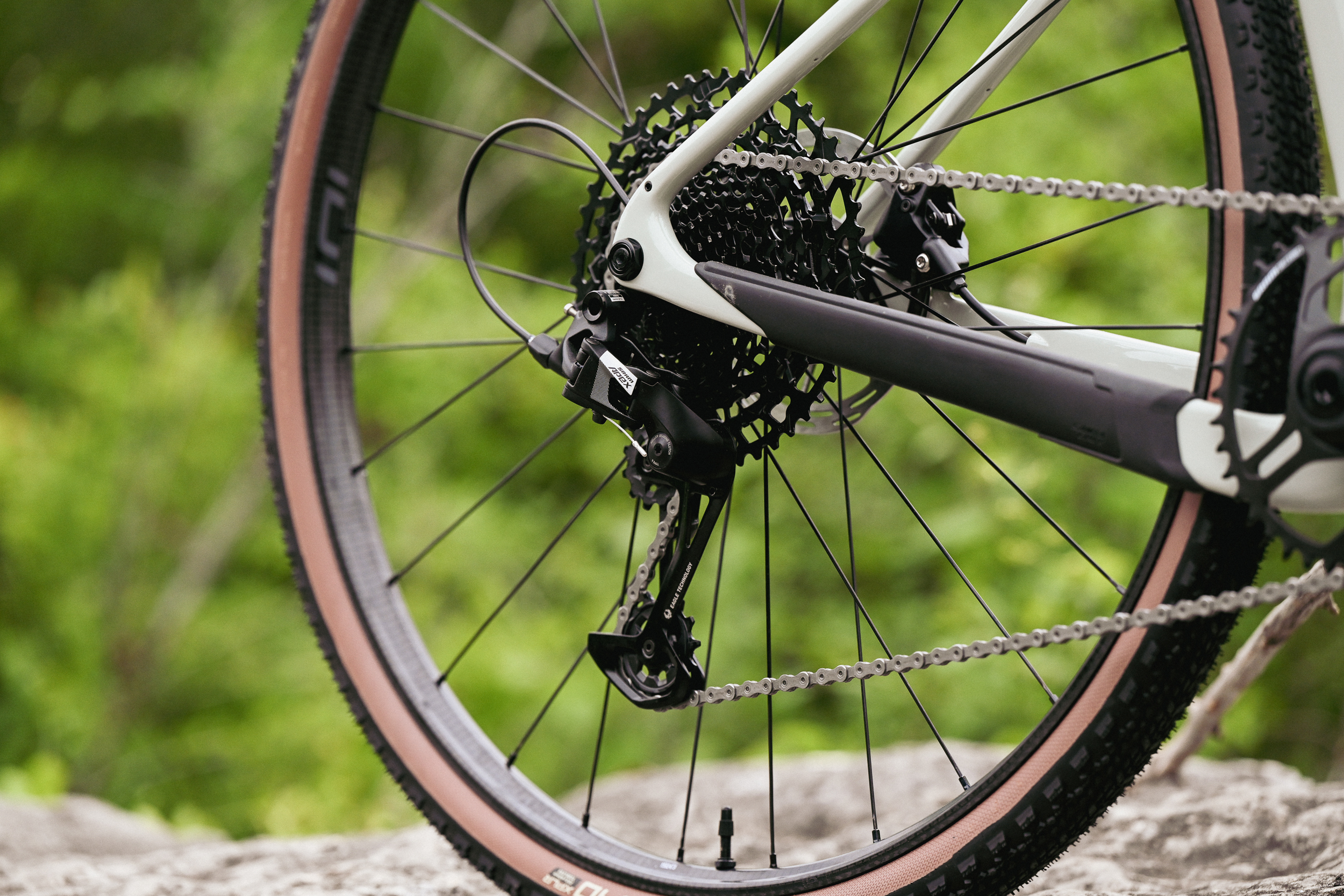
The SRAM Apex groupset is the entry-level wireless AXS groupset for riding on pavement or gravel. However, SRAM also offers a DoubleTap mechanical version. It is a wide-range, 12-speed 1x system. With a 40- or 42-tooth chainring and an 11-34-tooth cassette, it delivers a 400% gear range. SRAM offers both XPLR and Eagle drivetrain components for Apex.
SRAM employs forged aluminum for the crankarms and offers them in 165mm, 170mm, 172.5mm, and 175mm lengths. A DUB bottom bracket keeps it all spinning, and a power meter upgrade is affordable at an MSRP of $220.
SRAM outfits Apex with hydraulic disc brakes and offers drop bar and flat bar shift-brake lever systems.
Rival eTap AXS

SRAM’s Rival groupset is the lowest-priced, electronic-only groupset in the lineup. From this group upward, there are no mechanical drivetrain options.
Rival is a 1x or 2x, 12-speed drivetrain that uses aluminum crankarms. Gearing is wide-ratio, with the standard XPLR cassette spanning 10 to 44 teeth for a 440% range in 1x configuration. And, 10 to 30-tooth and 10 to 36-tooth cassettes are also available.
Rival 1x direct-mount chainrings have 38 to 36 teeth, and 2x systems are 46/33 or 48/35. Crankarms are available in the same lengths as Apex. An affordable power meter is also available, with an upgrade costing $263.
SRAM offers wide Rival cranksets to help alleviate clearance issues for frames that accept wider tires.
Force AXS
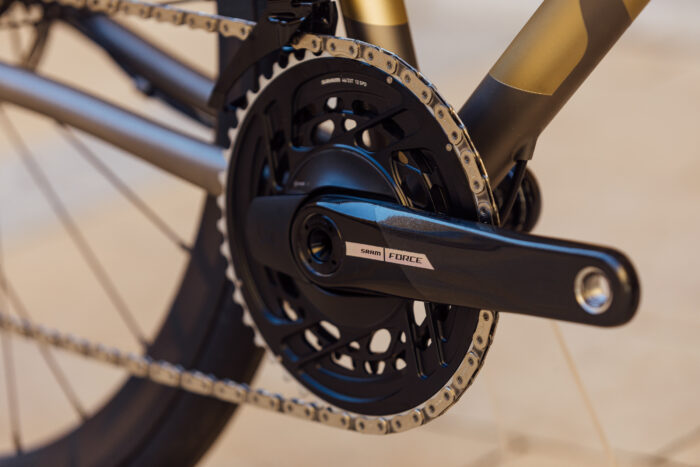
SRAM Force AXS is lighter than the Rival system and is the first tier to include carbon cranks. It is available in 1x and 2x, and SRAM offers gravel Force XPLR components. The 2x system has a single-piece double chainring with three gear ratios, while the 1x chainring offerings span 40 teeth to 50. Six crank arm lengths cover 165mm to 177.5mm. A DUB bottom bracket supports all of it.
Four 12-speed Force AXS X-Range cassettes span gear ranges from 10-28 teeth to 10-33 teeth.
The carbon-bladed shift-brake levers have newly revised ergonomics and feature Bleeding Edge technology, which eases the hydraulic fluid bleeding procedure. SRAM offers a power meter for Force AXS.
RED e-Tap AXS
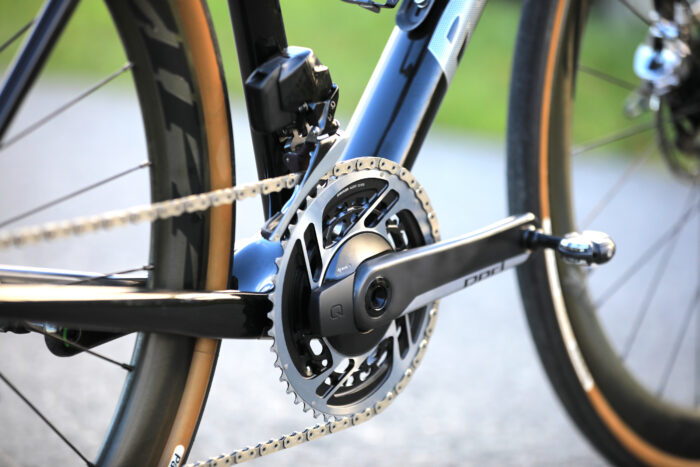
SRAM RED e-Tap AXS is the top-tier groupset for the company’s road groupset line. It’s for the pros.
SRAM’s lightest road component group has carbon crank arms and brake levers. The cranks come in 2x and 1x versions, with five arm lengths covering 165mm to 177.5mm. The double chainring model offers 46/33, 48/35, and 50/37 tooth combinations. For the 1x system, eight chainrings cover 36 to 50 teeth. A DUB bottom bracket ties it all together.
The SRAM RED rear derailleur has an Orbit fluid-damped jockey pulley cage for enhanced chain management. It is available in standard and wide-range XPLR configurations.
SRAM offers the Red flattop chain in a rainbow finish for those looking to stand out and several alternative AXS shift buttons for remote triathlon and time trial bike locations. And, of course, SRAM offers a chainring spider-mounted power meter for their top-tier road groupset.
Pricing
- Apex: Approximately $678-1,292
- Rival eTap AXS: Approximately $1,639
- Force AXS: Approximately MSRP $2,182
- RED eTap AXS: MSRP $1,453-2,690
SRAM Groupsets: Gravel
SRAM XPLR

SRAM has edged out to meet the masses who flock to the space between the road and singletrack with the XPRL groupset, explicitly designed for gravel.
SRAM XPLR isn’t a standalone groupset. XPLR is a collection of parts that can coexist within other SRAM groupsets.
XPLR systems are available with a new 1x XPLR AXS wireless drivetrain that runs in a 10- to 44-tooth cassette and an eTap AXS derailleur to match in Red, Force, and Rival builds.
Pricing
XPLR AXS: Approximately $564-1,714 for 1x drivetrain, excluding shifters.
FAQ
Mountain bike Transmission, top to bottom: XX SL Eagle, XX Eagle, X0 Eagle, GX Eagle
Mountain bike non-Transmission, top to bottom: XX1 Eagle AXS, XX1 Eagle, X01 Eagle AXS, X01 Eagle, GX Eagle AXS, GX Eagle, NX Eagle, SX Eagle
Road, top to bottom: RED, Force, Rival, Apex
SRAM RED e-Tap AXS is the brand’s most expensive and lightest gropuset. It is designed for professional road racing.
